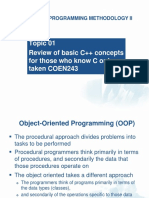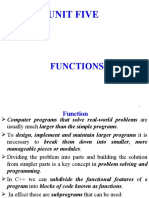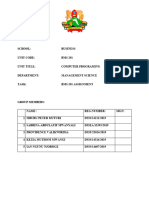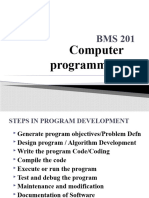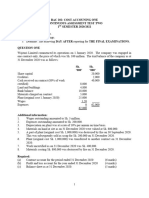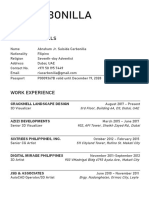0% found this document useful (0 votes)
67 views22 pagesBMS 201 Arrays and Functions 2021
The document discusses arrays and functions in C++. It defines arrays as collections of related memory locations that share a name and type. Arrays can be one-dimensional or multi-dimensional. The document also defines functions as blocks of code that perform tasks and may return values. Functions must be declared with a prototype before use and defined with a body. Parameters allow values to be passed into functions from the calling code.
Uploaded by
Brian MutuaCopyright
© © All Rights Reserved
We take content rights seriously. If you suspect this is your content, claim it here.
Available Formats
Download as PPTX, PDF, TXT or read online on Scribd
0% found this document useful (0 votes)
67 views22 pagesBMS 201 Arrays and Functions 2021
The document discusses arrays and functions in C++. It defines arrays as collections of related memory locations that share a name and type. Arrays can be one-dimensional or multi-dimensional. The document also defines functions as blocks of code that perform tasks and may return values. Functions must be declared with a prototype before use and defined with a body. Parameters allow values to be passed into functions from the calling code.
Uploaded by
Brian MutuaCopyright
© © All Rights Reserved
We take content rights seriously. If you suspect this is your content, claim it here.
Available Formats
Download as PPTX, PDF, TXT or read online on Scribd
/ 22


